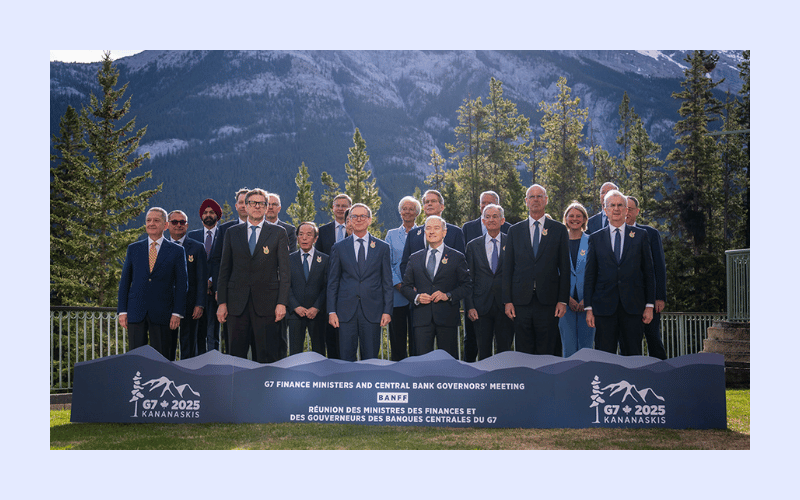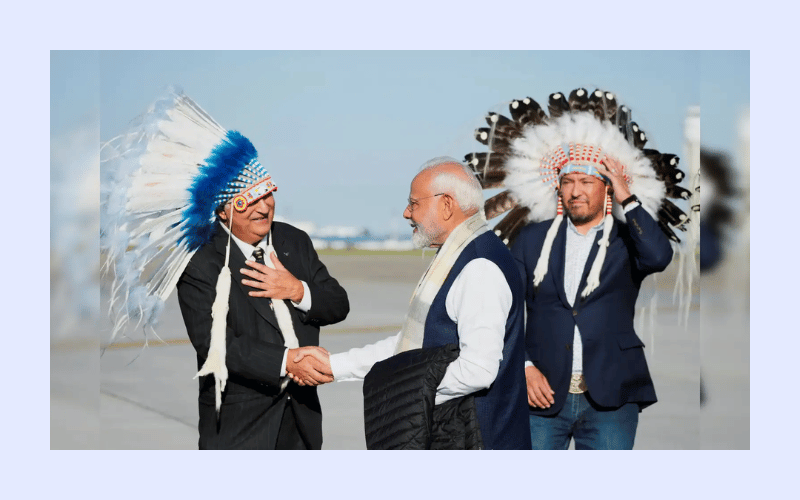June of the year 2025 will see a piece of history being created in terms of multilateral diplomacy, as the 50th G7 Summit will be hosted in the picturesque Canadian mountain resort of Kananaskis, Alberta. It will be historic since this will be the first time that such a summit will be held in the last 50 years since the establishment of the Group of seven (G7) an informal discussion in which Cananda, France, Germany, Italy, Japan, the United Kingdom and the United States hold discussions together to come up with solutions to the burning issues affecting the world. Being the host of the G7 in 2025, Canada will not offer a ceremony; the summit is where the leadership can be revamped in an increasingly complex, multipolar world.
Why Kananaskis? A Strategic Choice
The Kananaskis, located within an hour’s drive of the Banff National Park, offers tranquility in a very safe atmosphere, which is only appropriate where the world leaders are gathered. The alpine and remote location provides better logistics and security, and a typical Canadian environment. Canada is not a new host for the G7 Summits, as it has already hosted this event six times (in 1981, 1988, 1995, 2002, 2010, and 2018), yet the 2025 summit is not the first summit to take place in this state, but it will be considered an essential event due to its symbolic value. The summit proves to be a demonstration of the commitment of Canada to the undertaking of democracy and the safety of the delegates and citizens, irrespective of the enhanced security and the establishment of zones of protestation.
Canada’s 2025 G7 Presidency: Three Pillars
With Prime Minister Justin Trudeau and G7 Sherpa Mark Carney, the Canadian government has set out three thematic priorities of the 2025 G7 presidency:
Defending Democratic Societies and International Security: In an era of authoritarianism, cyber challenges, and war, this pillar is devoted to the defense of democratic norms, preparing the population to major health crises, and dealing with international crises such as the war in Ukraine and the violence in the Middle East.
Boosting the Clean and Digital Transition: The second priority is devoted to future-proofing economies by means of clean energy innovation, digital governance, and infrastructure resilience. This entails the control of artificial intelligence (AI), the minimization of digital divides, and the embrace of digital trade and cyber security norms.
Partnerships towards a sustainability future: Canada will broaden the focus of the G7 by creating partnerships with emerging economies, Indigenous peoples, and civil society to establish an inclusive, sustainable future in the world.
These pillars were developed based on the national consultations in provinces, the leaders of Indigenous people and the business communities, and the civil society groups, which is indicative of the bottom-up and inclusive Canadian diplomacy.
Geopolitical Landscape: What’s at Stake?
The G7 Summit 50 comes at a very serious geopolitical moment. The crises the world is experiencing are numerous, starting with armed conflicts and economic inequality, and including climate change and disinformation. The Kananaskis Summit is therefore both a crisis-management meeting and a long-term strategic planning meeting on global stability.
Ukraine is still the first item on the agenda. As the war approached its fourth year, the Western dwindling to remain united on the sanctions and aid. Ukrainian President Volodymyr Zelenskyy is to travel there personally to secure fresh commitments of military support and humanitarian relief, as well as post-war reconstruction.
The next acute problem is the crisis in the Middle East in general and the war in Gaza in particular. The move to increase humanitarian corridors, a ceasefire mechanism, and pressure exerted by international diplomacy on regional actors is likely to be requested by Canada and other G7 members. The G7 may be useful in facilitating multilateral dialogue between Israel and Palestine.
The Indo-Pacific is seeing apprehensions of Chinese vigor in Taiwan and the South China Sea, and is thus leading to the G7 reasserting freedom of navigation and international law. Though not a G7 member, China will leave a looming cloud beyond the talks, particularly within the spheres of trade, cyber-security, and AI governance.
Economic Themes: Trade, Inflation, and Digital Transformation
The stability in the global economy continues to be a fundamental G7 concern. Following years of post-pandemic inflation, slowdowns in the biggest economies, and tariff disputes, the meeting of G7 Finance Ministers in May 2025 in Banff preconditioned the creation of a cautious yet coordinated economic approach. Canada seeks to become a leader in rules-based international trade, but also wants to secure important supply chains in semiconductors, minerals, and energy.
It will also likely create tension regarding the digital taxation and corporate regulation, particularly across the pond between Europe and the U.S. Members of the G7 are divided on the issue of stronger digital regulation to curb big tech, with some, including the U.S., possibly resisting the move to avoid hurting national champions such as Meta and Google. Canada is hoping to facilitate an agreement on artificial intelligence ethics and cybersecurity standards, and the idea is to create an interoperable digital space not only throughout the G7 but also more widely.

Climate Change and Energy Security
Although the issue of climate change has been controversial whenever negotiated among the G7 members, it is likely to receive a new sense of urgency. The emphasis of Canada on a clean energy transition and climate resilience will put the dependence on fossil fuels, the development of green infrastructure, and investments in sustainable innovation in the discussion.
But it can get complicated with respect to varying national priorities. Whilst European countries and Canada are in a very sympathetic position on climate, the U.S. (particularly with a possible electoral realignment) and Japan could well argue the need to move more gradually to protect their energy security. The issue is to develop practical, coherent policies that would not hinder energy access in the interest of climate targets.
India’s Inclusion: Strategic or Controversial?
In a list of some of the debated consequences of the summit, the invitation of Indian Prime Minister Narendra Modi as a guest by Canada falls. India has the fifth-largest economy worldwide, implying that it has a great impact on the global supply chain and green energy markets. According to Canada, the G7 Sherpa, which invited India, the country is the pivot of any discussion regarding digital governance and economic resilience in the world.
The move has, however, encountered domestic opposition, especially amongst the Sikhs in Canada. The relationship between New Delhi and Ottawa is fraught with the killing of Hardeep Singh Nijjar in hyper controversial circumstances, as well as the aspersions of Indian interference in Canadian domestic affairs in 2023. The opposition to Modi’s visit consists of trite statements saying that this move sends the wrong signal regarding the Canadian approach to human rights and sovereignty.
However, the invitation of India, as well as other guest nations such as Australia, South Korea, Mexico, and South Africa, is a part of the wider Canadian concept of the extended and inclusive G7 format that would recognize the rising powers.
Security, Logistics, and Local Impacts
As it would be anticipated, such a large summit is accompanied by huge logistical requirements. Kananaskis and close by Banff are on increased security watch, which includes:
Security perimeters and checkpoints, RCMP-led
Drone spying and no-fly zones
Sanctioned protest sites: Leamington Fenlands Recreation Centre
Partial closure of roads and facilities that are accessible to the general population
An increase in accommodation services, transport services, and catering services.
Despite these temporary inconveniences, the summit creates an excellent boost to the Alberta tourism and hospitality sector. Local firms are cashing in on the arrival of media, delegates, and security officers. Besides, Canada is taking advantage of the event to showcase Indigenous culture and environmental sustainability in Alberta, which offers the chance of cultural diplomacy.
Key Outcomes to Watch
The international leaders will be in Alberta just for a few days and so the expectations should be restrained. Nevertheless, there are main outcomes, which the observers anticipate:
A Chair (as opposed to a unanimous communique) to set out common undertakings on trade, Ukraine, Gaza, and AI governance
An AI and digital regulation joint communique that could form the basis of an international digital framework
New financing pledges towards climate resilience, especially to the developing nations
Increase in the Rapid Response Mechanism (RRM), a G7 initiative to fight foreign disinformation and interference in elections.s
Further assistance to Ukraine, including details of military, financial, and reconstruction assistance
The Canadian presidency is more oriented toward viable cooperation than soaring statements. Mark Carney has underlined that the success will not be estimated by the volume of the final document, but by clarity and joint actions.
Reflections on G7 at 50: Evolution and Relevance
With the G7 turning 50, there are concerns about whether it remains relevant. The critics claim that the group is no longer reflective of the economic center of gravity, as there is the emergence of BRICS countries such as China, India, and Brazil. Others justify the usefulness of the G7 as a flexible, democratic, and fast-decision-making and norm-setting institution.
The Canadian presidency can be a game changer. The G7 can become more dynamic by inviting more voices, being action-oriented, and open to reform to become a force of good in the world. It can take place through the involvement of more stakeholders, the transformation of obsolete economic models, or the narrowing of digital gaps, but the 2025 summit might set a new standard of what multilateralism will entail in the post-pandemic, AI-driven world.













